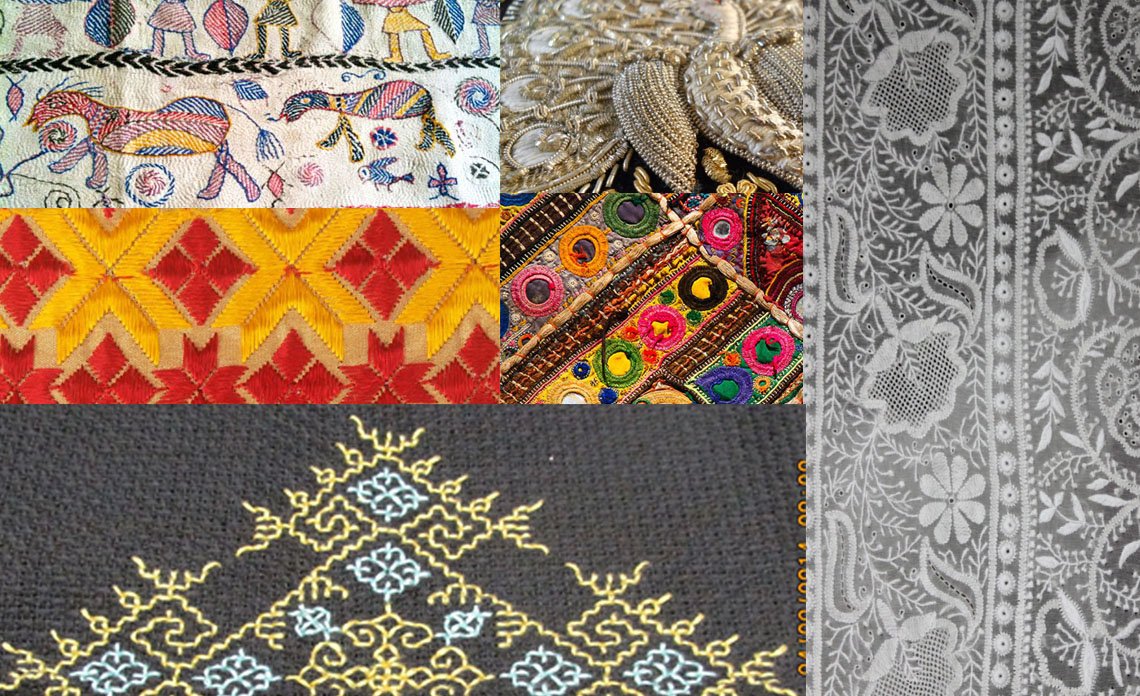Different Kinds of Embroidery Styles in India
Generally, embroidery styles are differentiated based on the kinds of fabric they are specially suited for, their motifs and their unique patterns. Indian embroidery are further identified by the regions known to specialize in each of the styles. One thing common to Indian embroidery however is the fact that they all bear some cultural significance. Some of the most prominent embroidery styles in India are discussed below:
- The Punjab Phulkari
Phulkari is one of the most prominent styles in all of India and also one of the most celebrated identities of the Punjab people. It is translated as ‘flower work’. As the name suggests, Phulkari motifs are flowery and mostly done by housewives. The stitches are made on the wrong side of the fabric so that the designs are formed on the right side.
- The Chinkankari
Done by the people of the Uttar Pradesh region of Northern India, the Chikankari is known for its unique herringbone stitches done on the wrong side, creating a shadow effect on the right side of the fabric. The style is said to have been originated by the wife of a Mughal emperor and to have quickly spread within members of the courthouse. Chikankari motifs are inspired by flowers and birds or simply done in lacy patterns.
- Rajasthani
Rajasthani styles are named after the people of the Rajasthani area. They are basically patchworks created by joining various, small, brightly coloured fabric. The motifs are abstract and non-uniform neatly pieced together in a beautiful blend of rhyming colours, giving off an eccentric essence to its look.
- Zardozi (Barathkam)
The typical Zardozi design is created by making delicate, complicated stitches on different kinds of fabric (mostly silk and satin) with gold and silver threads. The designs are further beautified with beads of different colours, creating a flambouyant look. Zardozi motifs are inspired by flowery bushes, creeper plants and are used as bags, curtains, cushion covers and other accessories.
- Kasuti of Karnataka
The men of Karnataka in South West India are the prominent makers of Kasuti embroidery. The complex motifs are inspired by natural elements such as flowers, birds, butterflies, fruits and vegetables as well as trees. Modern Kasuti styles are made on fabrics of different colours, as opposed to the older style of sticking strictly to white and milk colours. They are usually used as home accessories such as bedcovers, mats, bags and lampshades.
- The Bengal Kantha
In the Sanskrit dialect, Kantha means ‘rags’. The Kantha style is usually done on worn out pieces of fabric. They are used to provide protection from cold weather, as money bags, book covers and sleeping mats. Kantha motifs are mostly inspired by nature and folklore; ancient gods and goddesses, symbols of the universe, animals and flowers. Kantha embroidery is classified into different types based on what they are used for. Examples of Kantha styles are Lep kantha, Arshilata kantha, Durjani kantha, Oaarkanta, Rumal kantha and baiton kantha.

